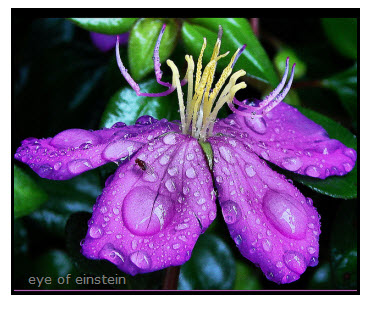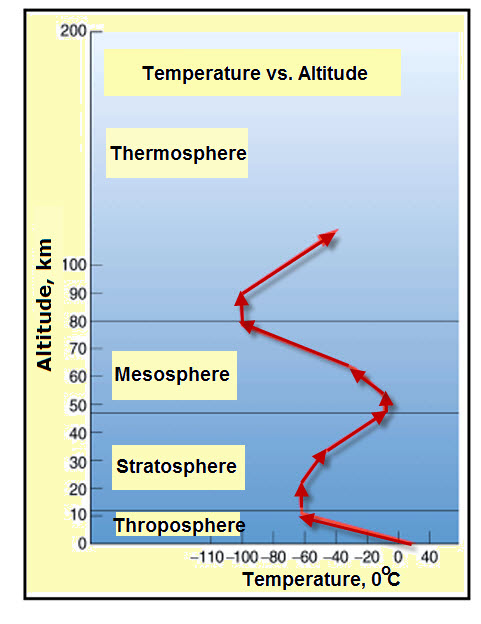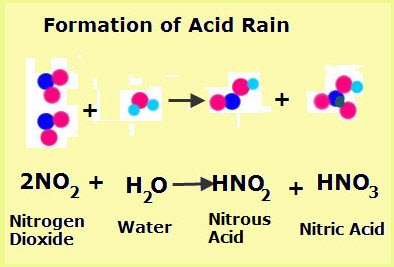Demonstrate the Water Cycle. 1. Fold a paper towel in half twice. 2. Lay the folded paper towel on a table and stand a glass on it. The glass must be large large enough to support a 16-ounce (480-ml) plastic soda or water bottle as shown. 3. Fill the bottle half full with warm tap […]
Clouds
Clouds form when liquid water from rivers, ponds, oceans, lakes, swimming pools, etc. evaporate. Evaporate means to change from a liquid to a gas (at a temperature that is lower than the boiling point of water–212 degrees F or 100 degrees C). Since water is usually a liquid, its generally called water vapor to indicate […]
Temperature Changes Within Earth’s Atmosphere
Earth’s Atmosphere can be divided into four layers with distinct changes in temperature as the altitude increases. Starting at Earth’s surface, these layers are: Troposphere: As the altitude increases, the air temperature decreases. The troposphere is hotter near the Earth’s surface because heat from the Earth warms this air. As the altitude increases the number of […]
The Formation of Acid Rain
Sulfur oxides are gases released during the eruption of volcanoes as well as when fossil fuels (coal and oil) are burned. Large amounts are released when industries and power plants burn fossil fuels.The diagram shows two sulfur oxides: sulfur dioxide sulfur trioxide Lightning causes nitrogen and oxygen in the air to combine forming nitrogen oxides. […]


